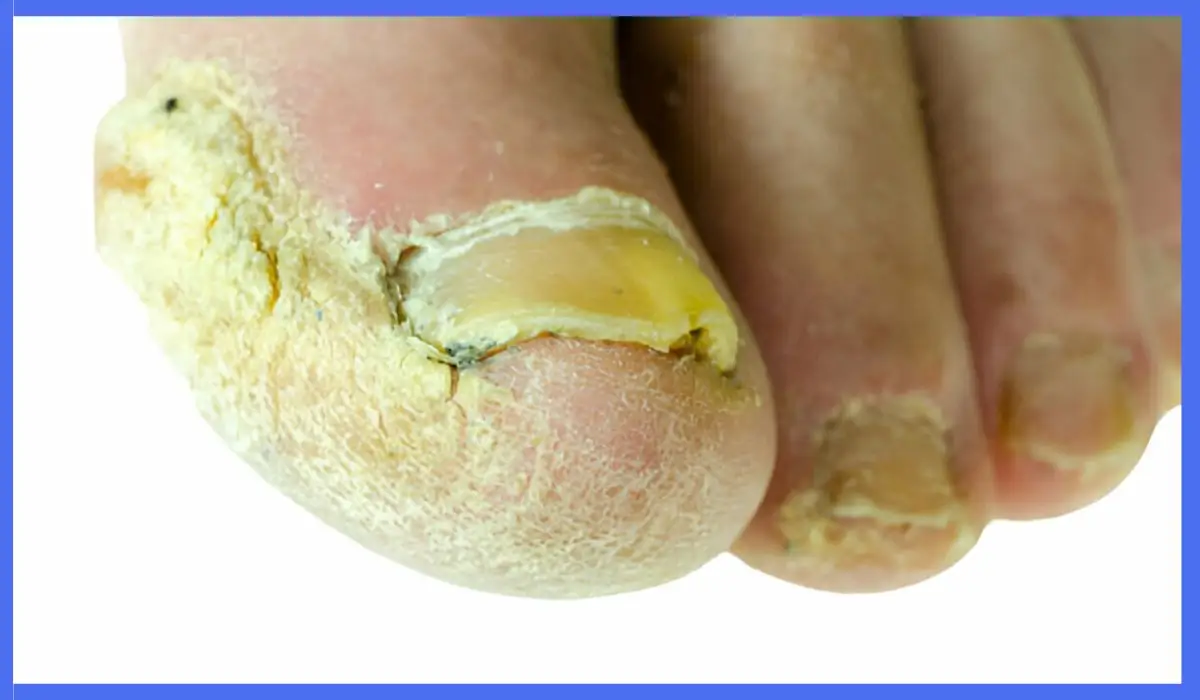Can You Get A Pedicure With Toenail Fungus? Learn The Risks!
Uncover the risks of getting a pedicure with toenail fungus. Understand the potential complications and precautions to ensure nail health and safety. Learn how to prioritize self-care while being mindful of the dangers associated with fungal infections.

Disclaimer: This article has been generated with the assistance of AI tools. While our research team has fact-checked the content, readers should independently verify information for accuracy and reliability.
Pedicures are a luxurious treat that many people enjoy as part of their self-care routine. However, if you’re dealing with toenail fungus, the decision to get a pedicure might not be as straightforward. While pedicures can be a great way to pamper your feet, there are potential risks associated with getting one while you have a fungal nail infection.
In this blog, we’ll explore the various factors to consider and the precautions you should take to ensure a safe and enjoyable pedicure experience.
What Is Toenail Fungus?

Toenail fungus, also known as onychomycosis, is a common condition caused by a group of fungi called dermatophytes. These fungi thrive in warm, moist environments and can penetrate the nail through small cracks or cuts [1]. Once the fungus takes hold, it can cause the nail to thicken, discolor (yellow, brown, or white), become brittle, and develop a crumbly or distorted appearance.
The Risk Of Spreading Toenail Fungus
While toenail fungus itself is not contagious, the fungi that cause the infection can be transmitted from person to person or through shared surfaces and objects [2]. This means that if you have toenail fungus and get a pedicure, there is a risk of spreading the fungi to other clients or salon staff or even contracting a different type of fungal infection.
The risk of transmission is particularly high in nail salons where tools and equipment may not be properly sanitized or sterilized between clients. Improper hygiene practices can create a breeding ground for fungi, increasing the likelihood of cross-contamination.
Precautions For Getting A Pedicure With Toenail Fungus
If you choose to get a pedicure while dealing with toenail fungus, it’s essential to take the following precautions to minimize the risk of spreading or contracting infections:
- Choose a reputable salon: Look for a salon that follows strict hygiene protocols and uses hospital-grade disinfectants to clean their tools and equipment. A reputable salon will also have trained staff who understand the importance of proper sanitization practices [3].
- Inform the technician: Be upfront with the pedicurist about your toenail fungus condition. This will allow them to take the necessary precautions and use appropriate procedures to prevent the spread of the infection.
- Bring your tools: Consider bringing your own nail clippers, files, and other personal tools to the salon. This will eliminate the risk of cross-contamination from shared equipment.
- Request single-use tools: Ask the technician to use disposable files, buffers, and other tools that can be discarded after your pedicure. This will prevent the transfer of fungi to other clients.
- Avoid cutting or filing infected nails: Instruct the technician not to cut, file, or manipulate your infected nails, as this can release spores and increase the risk of transmission.
- Wear protective footwear: Bring a pair of disposable slippers or flip-flops to wear during your pedicure. This will prevent direct contact with potentially contaminated surfaces and reduce the risk of spreading the infection.
- Monitor for signs of infection: After your pedicure, keep an eye out for any signs of new infections or worsening of your existing condition. If you notice any changes, consult your healthcare provider promptly.
Read More: Understanding Early Stage Toenail Fungus: Signs, Symptoms, And Treatment
Seeking Professional Treatment for Toenail Fungus
While it’s possible to get a pedicure with toenail fungus by taking the necessary precautions, it’s important to remember that a pedicure is not a substitute for proper medical treatment. If you have a persistent or severe case of toenail fungus, it’s advisable to seek professional treatment from a healthcare provider.
Treatment options for toenail fungus may include:
- Topical antifungal medications: These come in the form of lacquers, solutions, or creams and are applied directly to the affected nail [4].
- Oral antifungal medications: For more severe or stubborn infections, your healthcare provider may prescribe oral antifungal drugs like terbinafine or itraconazole [5].
- Laser or photodynamic therapy: These treatments use light or laser energy to kill the fungi and promote the growth of healthy nails [6].
- Nail removal: In severe cases, your healthcare provider may recommend removing the infected nail to allow a new, healthy nail to grow [7].
By seeking appropriate medical treatment, you can effectively eliminate the fungal infection and reduce the risk of transmission or recurrence.
Preventing Toenail Fungus
Prevention is always better than cure, and there are several steps you can take to minimize your risk of developing toenail fungus in the first place:
- Practice good hygiene: Keep your feet clean and dry, especially between the toes, and wear breathable socks and shoes.
- Avoid sharing personal items: Do not share towels, socks, or shoes with others, as these can harbor fungi.
- Wear protective footwear: Use flip-flops or sandals in public areas like pools, showers, and locker rooms to avoid direct contact with potentially contaminated surfaces.
- Keep nails trimmed: Trim your toenails regularly and keep them short to prevent them from becoming a breeding ground for fungi.
- Monitor for signs of infection: If you notice any changes in your nails, such as discoloration, thickening, or brittleness, seek medical attention promptly.
Related: Toothpaste For Toenail Fungus: Does It Really Work?
Summation
While it is possible to get a pedicure with toenail fungus, it’s essential to take the necessary precautions to minimize the risk of spreading or contracting infections. Choosing a reputable salon, informing the technician, using disposable tools, and seeking proper medical treatment are crucial steps to ensure a safe and enjoyable pedicure experience.
However, if you have a severe or persistent case of toenail fungus, it’s advisable to prioritize seeking professional medical treatment before indulging in a pedicure. By being proactive and vigilant, you can enjoy the benefits of a pedicure while protecting your overall foot health.
References
[1] Mayo Clinic. (2021). Nail fungus (onychomycosis). https://www.mayoclinic.org/diseases-conditions/nail-fungus/diagnosis-treatment/drc-20353300
[2] Centers for Disease Control and Prevention. (2022). Nail Fungal Infections. https://www.cdc.gov/fungal/nail-infections.html
[3] Hawkins, C., & Bingham, J. (2012). Potential sources of infection in nail salons. Journal of the American Podiatric Medical Association, 102(6), 480-486.
[4] Gupta, A. K., & Foley, K. A. (2015). Antifungal treatment for Pityriasis Versicolor. Journal of Fungi, 1(1), 13-29.
[5] Ameen, M., Lear, J. T., Madan, V., Mustapa, M. F. M., & Richardson, M. (2014). British Association of Dermatologists guidelines for the management of onychomycosis 2014. British Journal of Dermatology, 171(5), 937-958.
[6] Gupta, A. K., & Simpson, F. C. (2012). Device-based therapies for onychomycosis treatment. Skin Therapy Letter, 17(2), 4-9.
[7] Lipner, S. R., & Scher, R. K. (2019). Nail surgery and nail avulsion. Dermatologic Clinics, 37(4), 497-506.

Lisa Miller
Dr. Lisa Miller is a board-certified Dermatologist with over 15 years of experience treating a wide range of skin, hair, and nail conditions. She received her medical degree from the prestigious Columbia University College of Physicians and Surgeons and completed her dermatology residency at the University of California, San Francisco, one of the top dermatology training programs in the country. Dr. Miller is an active member of the American Academy of Dermatology and has authored numerous peer-reviewed articles and book chapters on the latest advancements in dermatological care. She is frequently invited to speak at national and international medical conferences, sharing her expertise with other clinicians. In her private practice, Dr. Miller takes a patient-centered approach, collaborating closely with each individual to develop customized treatment plans. She is passionate about empowering her patients to achieve optimal skin, hair, and nail health through a combination of the latest medical therapies and lifestyle recommendations.
